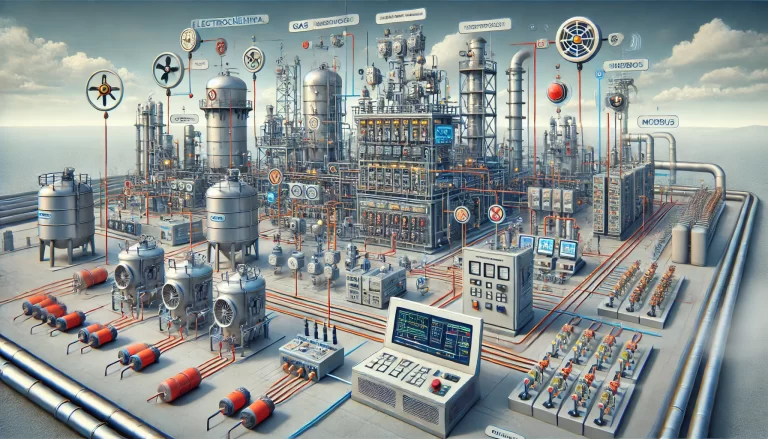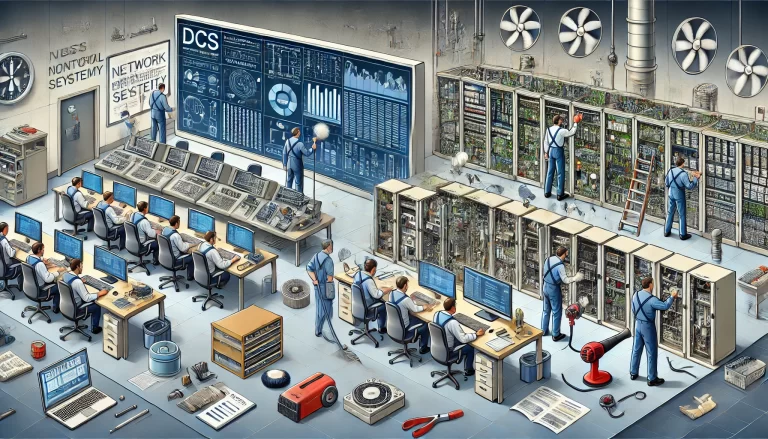1. System Capacity Specifications
a) Redundancy and Reserve Rules
I/O Modules
Reserve ≥ 10% of each type of I/O points
Reserve ≥ 10% of module slots (plug-and-play ready)
Controller Processing Capacity
≥ 60% margin under normal conditions
≥ 40% margin under stress conditions
Operator/Server Workstations
≥ 60% CPU margin under stress conditions
Memory Capacity
≥ 40% margin in RAM
≥ 60% margin in external storage
Communication Load Limits
Token bus load rate ≤ 40%
Ethernet load rate ≤ 20%
b) I/O and Control Loop Capacity
I/O point count per cabinet/station must meet operational demands
Control loop capacity must satisfy process requirements
c) Power Supply
Logic and field power supplies must meet applicable codes
Reserve capacity must be considered
d) Database Storage
Real-time and historical database capacity must meet operational needs
Reserve storage must be ensured
e) Cross-System Data Exchange
Data exchange capacity with other systems must match unit-level demand
Reserve for expansion must be considered
f) Alarm Information Retention
Must store alarm records for ≥ 30 days
Support both display and printing
g) System Scalability
The system must support sufficient operator stations, field control stations, and function modules, with future expansion capability

2. Compatibility and Integration with External Systems
a) Communication Compatibility
Compatible with mainstream interfaces, protocols, and configuration tools
Supported Physical Interfaces: RS-232, RS-485
Supported Protocols: HART, Modbus, mainstream fieldbus, TCP/IP
b) Supported Transmission Media
Coaxial cable
Optical fiber
Twisted pair
c) Protocol Support
HART (for smart instruments)
Modbus (for device-level integration)
Mainstream fieldbus (e.g. Profibus, Foundation Fieldbus)
TCP/IP (for network communication)
d) Device Integration Capability
Integrate seamlessly with PLCs and fieldbus systems
Support third-party equipment connectivity
e) Software Openness
Application software shall be modular and open-architecture
Provide development tools and interfaces for secondary development
Enable sharing of real-time and historical data
f) Enterprise-Level Integration
Fully open protocols, enabling integration with enterprise management systems (e.g. ERP)
Direct communication with systems and devices using standard protocols like Modbus

3. Configuration Software Usability & Standardization
a) Compatibility
Use standard formats such as IEC 61131-3
Enable seamless interoperability with third-party systems
b) Unified Design
Consistent interface and logic across plant units
Fully aligned with process control specifications to minimize operator training
c) High Efficiency
Support modular configuration (e.g. drag-and-drop logic blocks, parameter templates)
Accelerate configuration and reduce engineering workload
d) Intuitive Interface
Adopt standard industry color codes (e.g. green = run, red = stop)
Unified graphics and symbols for clarity
e) System-wide Consistency
All interfaces must be clean, intuitive, and free of redundancy
Labels, color codes, and alarms must be unified throughout the system

4. System Expandability and Upgradeability
a) Hardware Scalability
Support online addition/removal of the following:
I/O modules
Controllers
Switches and relays
Must follow modular, plug-and-play architecture
Device expansion shall not interrupt ongoing system operation
b) Technology Upgrades & Customization
Support integrated power plant automation solutions
Capable of tailored function development
Compatible with both legacy and emerging technologies
c) Full-Level Functional Coverage
Enable control and monitoring from field device to enterprise level
Support virtual control simulations (PC-based)
Functional Levels:
Device Layer: Direct link to sensors and actuators
Control Layer: Logic and real-time control
Management Layer: Monitoring and analytics
Simulation Layer: Offline testing and verification
d) Openness & Universality
Based on open network architecture
Operate on widely adopted OS platforms
Designed to ensure expansion via standard interfaces and avoid vendor lock-in
